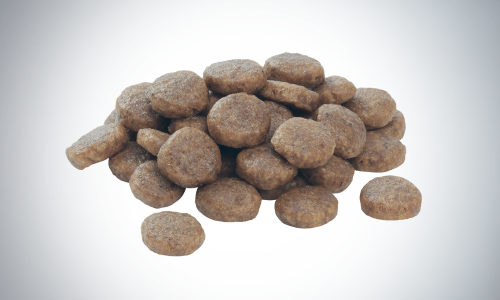Practice Scenario

Meet TEDDY
A 4-month-old, male, Great Dane puppy
- Teddy is presented today for his final puppyhood vaccinations.
- When asked about Teddy's diet, his owner said Teddy eats a complete and balanced food that the breeder provided. Since the food is nearly gone, the owner wants to provide Teddy with a "more natural diet."
- Teddy’s owner plans to feed a grain-free dog food, possibly one that is also raw. The owner eats a gluten-free diet and feels "much healthier." Teddy’s owner wants a long, healthy life for Teddy, too.
- The owner also asks if Teddy needs a calcium supplement. His sire is a large, heavy dog; the owner believes Teddy will be similar in size and weight.
Feeding Philosophies
Considerations for Feeding Gluten-Free Diets to Pets
The primary indication for gluten-free diets in people is to treat celiac disease, an autoimmune disorder occurring in genetically predisposed individuals that can be triggered by ingestion of gliadin, a component of the gluten found in wheat, barley, and rye. Celiac disease has not been diagnosed in dogs or cats.
Despite the fact celiac disease affects only 0.5-1% of the human population worldwide, gluten-free diets have become a human nutrition trend and are becoming increasingly popular for pets.

Key Messages
- The term gluten refers to the storage protein found in grains. A specific component of gluten is gliadin, which is present only in the gluten from wheat, barley, and rye.
- In people with celiac disease, gliadin from wheat, barley, or rye can trigger an immune reaction. Gluten-free diets are used to treat celiac disease and are now a nutrition trend having become increasingly popular with healthy people.
- Gliadin is not present in the gluten from other grains, e.g., rice, corn/maize, millet, or sorghum. Therefore, these grains are considered safe for those on “gluten-free” diets.
- Celiac disease, per se, has not been diagnosed in dogs or cats. However, pet food trends tend to follow human nutrition trends, and the popularity of gluten-free or grain-free commercial pet foods has grown.
- A type of gluten sensitivity (gluten enteropathy) has been observed in a very small number of dogs, but no cats. The affected dogs were from one family line of Irish Setters and a group of Border Terriers. These dogs benefit from a gluten-free diet.
- There is no scientific evidence that gluten-free diets are better for healthy pets than other nutritionally complete and balanced diets.
- In commercial pet foods, as well as human foods, wheat gluten helps the food maintain its shape and provides texture.
To Share With Pet Owner:
Gluten in Pet Food
Gluten-free diets are increasingly popular in human nutrition and this in turn can influence pet food decisions. What exactly is gluten and why is it found in pet food?
Additional Resources
Verlinden, A., Hesta, A., Millet, S., & Janssens, G. P. J. (2006). Food allergy in dogs and cats: A review. Critical Reviews in Food Science and Nutrition, 46, 259–273. doi: 10.1080/10408390591001117
Gaschen, F. P., & Merchant, S. R. (2011). Adverse food reactions in dogs and cats. Veterinary Clinics of North America: Small Animal Practice, 41, 361–379. doi: 10.1016/j.cvsm.2011.02.005
Gujral, N., Freeman, H. J., & Thomson, A. B. R. (2012). Celiac disease: Prevalence, diagnosis, pathogenesis and treatment. World Journal of Gastroenterology, 18(42), 6036–6059. doi: 10.3748/wjg.v18.i42.6036
